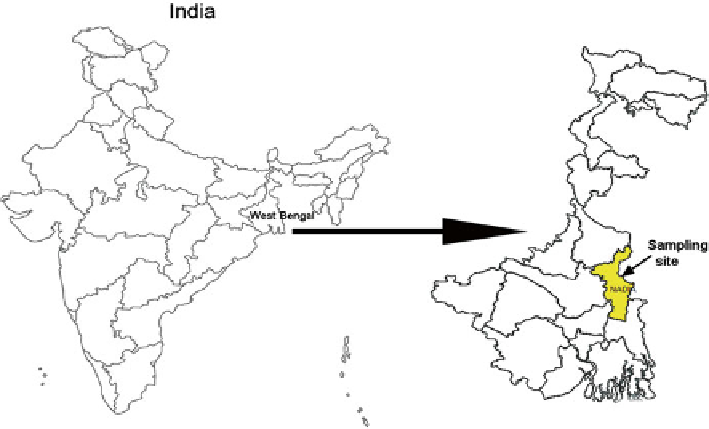Environmental Engineering Reference
In-Depth Information
many procedures have been documented earlier (US EPA
2002
). The need for low-
cost and eco-friendly technologies for removing As from the environment is recently
being emphasized. For survival under metal-stressed conditions, microorganisms
have evolved several resistance mechanisms like exclusion, intra- and extra-cellular
complexation, precipitation, volatilization, enzymatic oxidation/reduction, and
adsorption (Nies
1999
). Microbial isolates having either of the mechanisms would
be useful to select a possible As bioremediating candidate.
The aim of the present study was to fi nd an arsenic resistant indigenous bacterial
isolate from paddy fi eld rhizosphere soil irrigated with As-containing groundwater,
which could effectively remove arsenic under aerobic culture condition and that can
be used for bioremediation without the need for pre-processing. We found a
Brevibacillus
sp. strain KUMAs1, capable of removing arsenic, suggesting the pos-
sibility that it could be used for bioremediation of arsenic.
Methodology
Rhizosphere soil of paddy fi eld, Nadia District, West Bengal, India (Fig.
1
), was
collected in sterile container to avoid any contamination. The pH value and organic
carbon content of the soil sample were determined following standard method
(Walkley and Black
1947
; ASA
1982
). Total As content in the soil sample was mea-
sured after acid digestion and was quantifi ed by atomic absorption spectroscopy
(AAnalyst 400, Perkin Elmer, Singapore).
Fig. 1
Geographic location of arsenic resistant bacterial strain KUMAs1 isolation site

Search WWH ::

Custom Search